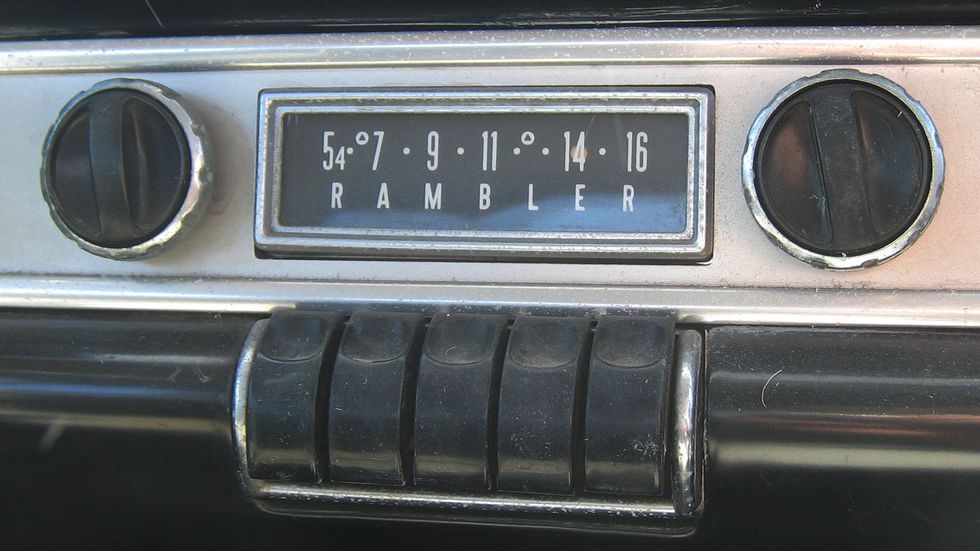Duck and Cover
November 4, 2021
“Always remember the flash of an atomic bomb can come at any time…sometimes the bomb might explode without any warning…the bomb might explode when no grown-ups are near…we must be ready all the time for the atomic bomb.”

Schoolchildren in the 1950s and early 60s grew up with this warning, punctuated with talk about flying glass, radiation burns, and collapsing buildings. It was part of an effort to educate them on how to protect themselves from the ever-present danger of enemy planes appearing overhead. To save themselves they had to crawl under their desks and put their hands over their heads. The potential crippling fear of being incinerated was softened by partnering this lesson with a cartoon turtle named Bert, who was fully trained in how to “duck and cover.”
During the Cold War, particularly during this time period, the fear of the Soviet Union attacking the United States with nuclear weapons was real. After we displayed our nuclear capabilities in 1945 by leveling Hiroshima and Nagasaki to end the war with Japan, the Soviets answered in 1949 with a test display of their nuclear prowess. To help alleviate the growing panic around atomic bombs, the government launched civil defense programs to educate people on protecting themselves, including the duck and cover program.
Americans were living under this ever-present fear in 1957 when the Soviet Union launched the first satellite, Sputnik, into outer space. Our paranoid imaginations quickly leaped from this basketball-sized piece of metal orbiting the earth, to the idea the Soviets were preparing to use rockets to deliver nuclear warheads and were going to rain atomic bombs on our heads from orbiting satellites. President Eisenhower initially downplayed the Soviets first move in the space race, claiming the satellite launch "does not raise my apprehensions one iota," and categorized it as a mere scientific achievement. The Soviets sent a larger capsule into orbit a month later carrying a dog, Leica. Four days after Leica became an astronaut, Eisenhower, less dismissive and more reassuring, addressed a fearful nation to talk about the relationship between science and national security. In the months that followed, the government formed the National Aeronautics and Space Administration (NASA) and Congress passed the National Defense and Education Act. The act increased funding for teaching science, technology, engineering, and math and created the first federal student loan program. The United States refused to let the Soviet Union lead the world in science and technology or nuclear capabilities. Sputnik was a wakeup call.
"Sputnik moment" now signifies the instant a country or society realizes it needs to catch up with another country. President Barack Obama used it in his 2011 State of the Union address. He warned that the current generation faced its Sputnik moment. It was the threat that new jobs and industries would go elsewhere instead of taking root in the United States. Recently, after reports that China tested a hypersonic missile, Chairman of the Joint Chiefs, General Mark Milley, said the test may not quite be a Sputnik moment, but it was very close. President Biden simply said, "yes," in response to a question asking if he was concerned about the test. Serious discussions about the hypersonic test were lost in the ever-present deafening media chatter. As was the government’s attempt to reassure the country through claims we have already tested hypersonic missiles and we possess new technology that adds to the accuracy and power of our nuclear weapons.
The threat of nuclear destruction may not be as prominent as it was during the height of the Cold War. But Russia and China are significant threats, and North Korea’s leader Kim Jong-un is not shy about flexing his much smaller but still threatening nuclear muscles. China’s hypersonic test may not be enough to rekindle cold war paranoia. However, we shouldn't downplay the possibility of Chinese aggression just because we believe their desire to sell us things is greater than their desire to conquer us.
Today, an active shooter is more of a threat than a nuclear attack from a foreign power. People learn to "run, hide, fight," not "duck and cover.” But the threat of nuclear destruction, even if it is less likely than it was in the age of poodle skirts, Elvis Presley, and Nikita Khrushchev, remains a part of our reality. The role of a responsible government is to study and learn from the Cold War experience, understand current capabilities and global relationships, and plan for potential scenarios. This planning includes taking steps to safeguard its citizens.
Missile tests and increased nuclear capabilities of other countries may not be a “Sputnik moment” foreshadowing an increasing danger of nuclear attack. But it is a reminder the United States government can do a better job educating its citizens on weapons of mass destruction and reassuring us of their ability to defend the country in the event of a nuclear attack.
“Duck and cover” was a weak response to the nuclear threat. If it taught us anything it was to hide from the realities of atomic war. It didn’t help us prepare for it. The government needs to teach, not pacify, and twenty-first century Berts need to poke their heads out of their shells and “listen and learn.”
Like what you read?
Subscribe to my mailing list and get notifications to your inbox when my next blog post goes live.
Contact Us
More By Joe


